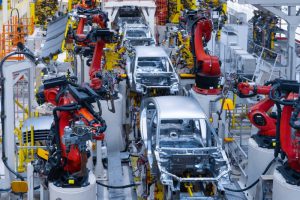The Invisible Handshake: AI in Procurement Negotiations
Discover how AI is transforming the procurement landscape and what this means for supply chain leaders.
Key Points of the Article
- The rise of AI technologies in procurement processes offers new opportunities for more efficient negotiations.
- Supply chain managers need to understand how AI can transform traditional procurement strategies and manage risks.
- The integration of AI in procurement requires new skills and a willingness to adapt among industry professionals.
Blog Text
The Impact of AI on Procurement Negotiations
In the world of supply chain management and procurement, we are witnessing a revolution driven by artificial intelligence (AI). Recent developments in AI technologies present an opportunity to transform procurement negotiations. The term “invisible handshake” refers not only to the unknown but also to the influence that AI can exert without direct human involvement.
The Changing Landscape of Procurement Strategies
Traditionally, procurement negotiations have been a human endeavor, often reliant on experienced negotiators. However, the introduction of AI tools offers new possibilities to optimize these processes. By leveraging data analysis and algorithms, organizations can make decisions more quickly and accurately. This shifts the dynamics of how companies select their suppliers, conduct price negotiations, and manage contracts.
Leaders in supply chain and procurement must be aware of this shift. It requires an open attitude toward technology and a willingness to adapt existing strategies. AI not only provides efficiency but also enhances risk management. By analyzing historical data, AI can identify patterns that indicate potential delivery issues, allowing companies to act proactively.
Risks and Implications
With every new technology come risks. In the case of AI in procurement, there are concerns about data reliability and the ethical implications of algorithms. Who is responsible for decisions made by AI? How can we ensure that the data used by machines is accurate and free from bias? These questions must be seriously considered by industry leaders.
Introducing AI into procurement methods also demands new skills. Professional development and retraining are crucial. It is essential that procurement professionals not only become familiar with the technology but also understand how to effectively integrate it into their strategies.
The Future of Procurement
The future of procurement within the supply chain looks promising but requires adjustments on multiple fronts. Leaders must invest not only in technology but also in the talent that can harness this technology. The focus should be on collaboration between AI systems and human expertise to maximize the benefits of this revolution.
It is likely that in the coming years, we will see increasingly hybrid procurement teams, where AI systems collaborate with procurement professionals to achieve the best outcomes. The human factor remains crucial, but the role of technology is becoming increasingly important. The future of supply chain management will increasingly revolve around a harmonious collaboration between humans and machines.
Conclusion
The integration of AI into procurement processes is not just a technological trend but a necessary shift for organizations that want to remain competitive. Leaders in supply chain and procurement are encouraged to embrace AI not only as a tool but also as a strategic partner in their procurement processes. By understanding the opportunities and challenges that AI presents, they can be better prepared for the future of their field.
References
McCrea, B. “The Invisible Handshake: AI to AI procurement negotiations.” Supply Chain Management Review. Available at: [https://www.scmr.com/article/the-invisible-handshake-ai-to-ai-procurement-negotiations](https://www.scmr.com/article/the-invisible-handshake-ai-to-ai-procurement-negotiations) (last accessed: [add date]).











